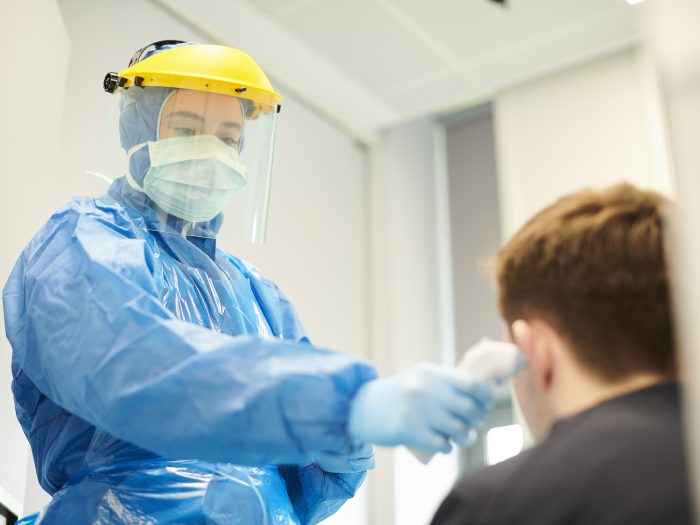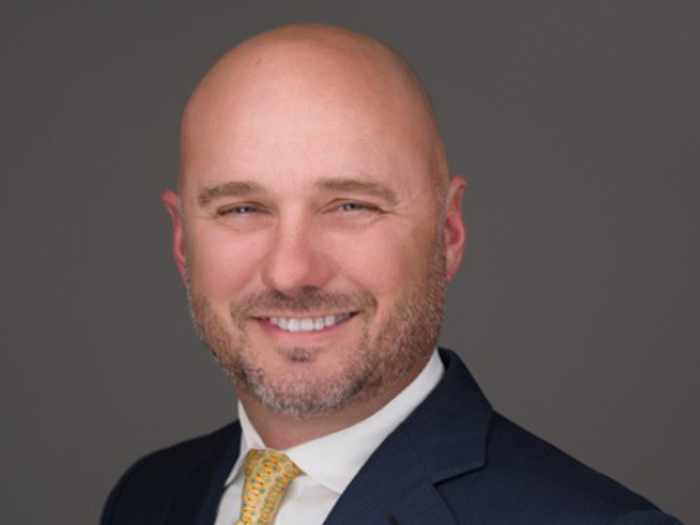6 Critical COVID-19 Risks Facing the Health Care Industry

News coverage of COVID-19 and what it’s doing to our economy, schools and health care system has become so constant, it’s inescapable.
First, social media outlets sounded the alarm on scarce availability of testing kits, shortages of masks and now ventilators. Now, large buildings such as convention centers, schools and gymnasiums are being converted into temporary hospitals.
The impact that the novel coronavirus is having on the health care system is in fact exactly that: novel.
“The virus itself is something that no one has immunity to, and that’s why it’s called the ‘novel’ coronavirus,” said Gisele Norris, strategic account manager and co-leader of Aon’s global infectious disease task force. “No one has any existing immune response.”
As nurses, doctors and scientists put their lives on the line to help combat the growing pandemic, here’s what risks are at the top of mind for the health care industry.
1) Coverage Exclusions
As the volume of related claims rise, more insurers are writing exclusions in coverage, and organizations are racing to pinpoint their exposures.
“As our health care clients come up for renewal, we’re going to see certain restrictions or even exclusions for pandemic batch coverage,” explained Steve Kahl, managing director, Gallagher’s health care practice.
“Batch refers to how an insurance policy will respond to multiple related claims. If we lose that coverage, it could really impact the bottom line of our health care organizations and be detrimental.”
In response to concern over coverage exclusions, the federal government has written and is continuing to write some immunities into law, but it can vary by state.
“There’s the federal PREP Act that will provide some immunity, but of course, the extent of that immunity is difficult to gauge,” Norris said.
In the event that health care organizations can’t cover income that has been lost from cancellation of elective surgeries and other procedures, hospital balance sheets are threatened.
“If carriers are successful at issuing renewal exclusions for this event, there will be major client concerns about policy renewals,” she added.
2) Liability
Even in times of normalcy, liability is a concern for any organization. One can imagine how that risk would increase for health care organizations in a time of global pandemic.
Industry experts may even argue that liability is the number one concern that COVID-19 presents to organizations, because in order to mitigate liability, employees must be properly cared for and protected.
“When we talk about health care, the first thing you think of is professional and general liability,” Norris explained.
“Professional and general liability could be affected by failure to diagnose, failure to utilize adequate infection control, and many other triggers that could result a bodily injury claim.”
To name one example, professional liability claims could come from doctors and nurses who are unknowingly infected and are treating patients in the absence of adequate personal protective equipment. A general liability claim could result if a child contracts the virus when enrolled in onsite childcare supplied by the hospital.
Workers’ compensation for those same physicians and nurses is also a major concern for health care organizations. According to Norris, an estimated 14% of COVID-19 cases in Italy are health care workers, which highlights just how extensive the exposure is.
“If an employee contracts COVID-19, and it spreads throughout the employee population?” asked Kahl. “Workers’ comp has to include communicable disease coverage extensions, and the injury would need to be compensable for coverage to apply subject to each states workers’ compensation laws.”
3) Financial Strain
From the rampant price gouging of what little personal protective equipment (PPE) is available to the cancellations and postponements of elective surgeries, hospitals and outpatient facilities are under incredible financial pressure in a time when they need the most resources.
“For hospitals that are in hot spot areas, elective procedures are down 50%. Outpatient procedures are down 80%. That’s a huge revenue loss,” explained Lorraine Lewis, executive vice president, Alliant.
“Most revenue that makes hospitals profitable is procedural based care; it’s not having … sick people hanging out there.”
From a business interruption perspective, organizations are grappling with how to cover losses and not only remain profitable but also remain open.
According to Lewis, due to other health care finance pressures, some hospitals have already been forced to close their doors or have been acquired by other organizations. There is concern that this trend will be greatly exacerbated due to the financial pressures resulting from COVID-19.
“There’s a concern in impacted areas by nursing home operators due to the vulnerable nature of the residents they serve. The questions that being asked are, ‘How do we make our staff feel safe, how do we manage our labor costs, and how do we work through staffing issues if childcare isn’t available?’ ”
A lack of revenue, rationing of care and limited resources is ultimately a recipe that will impact the accessibility of high quality health care even after the pandemic is over.
“The media is focused on the lack of ventilators and bed surge, but I think the real concern is the long-term impact on high quality health care in the future. Having a strong economy is what allows us to have good health care and good medicine.”
4) Supply Chain Interruption
While the spread of the virus has certainly resulted in increased demand for personal protective equipment, interrupted supply chains are also part of the problem.
“A lot of PPE is made in China, so the fact that the Chinese outbreak was the first one is a little bit problematic,” Norris said. “Hospitals are going to need to work together and support each other as the virus moves.”
Especially in hot spot areas, government officials have been encouraging this type of support among health care organizations to offset an imbalance of resources as much as possible.
“I think the organizations that are doing the best job are the ones that have good risk management and good planning. Having a plan for infection control, making sure that, from a supply chain perspective, you’re not relying on one vendor is important,” said Lewis.
“Proper planning eliminates poor performance.”
5) Cyber
Cyber threats are often wrongly viewed as low risk, but when it comes to hospitals, the risk couldn’t be higher. The need to avoid privacy liability and HIPAA violations is always of utmost importance for these types of organizations, but the need is especially paramount in times of crisis.
As modeled in this Risk & Insurance® scenario, cyber attacks can affect functions as critical as life support machines.
Hackers are certainly taking advantage of the pandemonium, too. According to Norris, cyber criminals targeted Johns Hopkins during the COVID-19 crisis by duplicating their official virus tracking map. Malware was then loaded onto computers of those who tried to access the duplicated map.
The U.S. Department of Health and Human Services even experienced a cyber attack that attempted to slow down its operations during coronavirus response.
“Hospitals are understaffed and overworked and not paying attention, and then if you hit the hospital with an attack, like a ransomware attack, you’re going to debilitate an environment pretty heavily,” Karim Hijazi, CEO of Prevailion, a cyber intelligence company that infiltrates attacker networks, told Risk & Insurance® in March.
6) Fatigue
Despite their heroism, health care workers are mortal like the rest of it. Unrivaled circumstances are leaving them physically and mentally exhausted.
“Fatigue is certainly a factor among these providers, depending on what city they’re located in,” Kahl said.
“We’re seeing significant strain on our frontline resources, including our physician population, nursing population, any allied providers that are involved with supporting patient care and emergency preparedness.”
According to Kahl, the field is even seeing retired physicians donate their services to support doctors and nurses suffering exhaustion or who have perhaps contracted COVID-19 themselves.
Health care workers are also suffering the emotional fatigue that comes with a pandemic.
“When a provider deals with a patient passing away or has to talk to a distraught family, they take that burden home with them. We’ve had a process in place supporting Care for the Caregiver and are now updating it to deal with this pandemic,” Kahl said.
Kahl also noted that Gallagher is working with its Health Systems to support doctors dealing with patients who are isolated due to limited or restricted visitation regulations.
“Our doctors and nurses and scientists are on the front line,” said Lewis. “These people are making enormous sacrifices personally and professionally at their own risk, and I think that is glorious.” &












